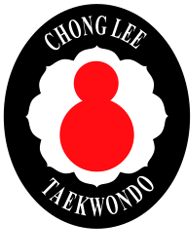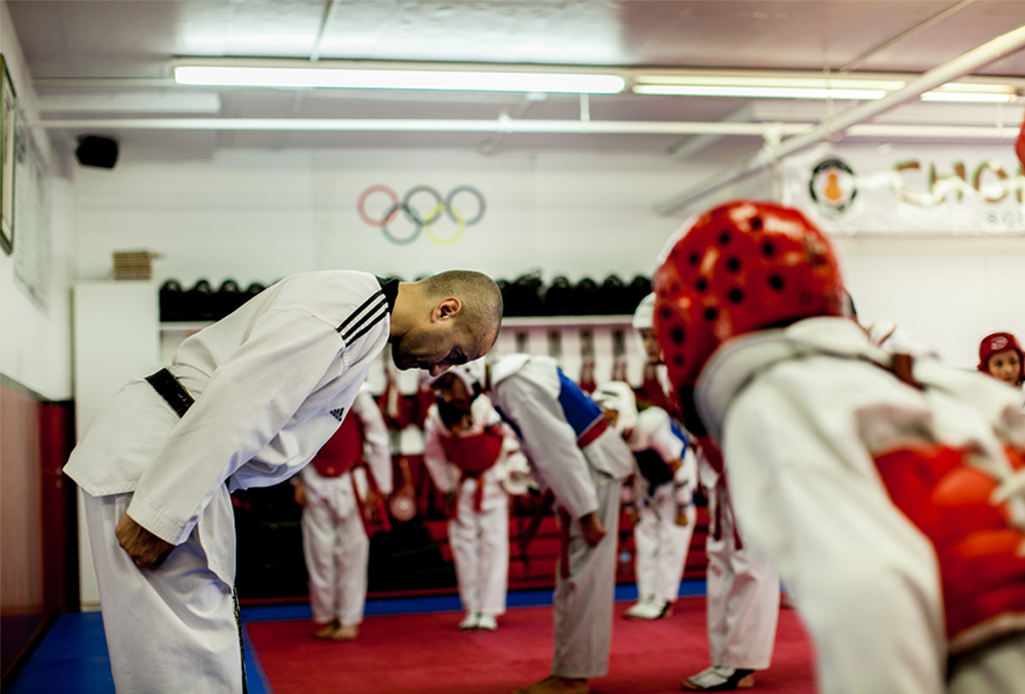

HISTORY
OF TAEKWONDO

Early Koreans developed unique martial art forms for unarmed self defense to complement their skills with weapons. The first recorded evidence of what was to become modern Tae Kwon Do is found about two thousand years ago in Korean history. A mural painting from the Koguryu kingdom (37 B.C. to 66 A.D.) was found in a tomb believed to have been built sometime during the period 3 to 427 A.D.
The modern period of Taekwondo began with the defeat of the Japanese and the liberation of Korea in 1945. Korean martial arts masters wanted to eliminate Japanese influences. They began discussions on how to return to the traditional Taekyon based Korean martial arts and on how to unite the various martial arts schools (or Kwans) and styles into a single style and national sport. After several years of discussions, the name “Taekwondo” was chosen in April 1955.
Taekwondo means “the way of the foot and the fist” or in other words, “the way of kicking and punching”. The name was derived from the Korean word “Tae” meaning foot, “Kwon” meaning fist and “Do” meaning way of. Hands and feet can be used to overcome an opponent, but the trademark of the sport is its combination of kick movements.
The spread of Taekwondo as a martial art and competitive sport continues to this date. The principle events in the rapid evolution of Taekwondo as a popular world wide sport are:
Today Tae Kwon Do is by far the most widely practiced martial art in the world.
PHILOSOPHY
OF TAEKWONDO
Taekwondo philosophy is based on the concept of Yin and Yang which symbolizes the interaction of opposing forces in nature. Harmony and balance are achieved when these opposing forces are distributed equally. When balance is not achieved, there is disorder or failure.
Respect, humility, and healthy moral standards are also major concepts at the heart of taekwondo. The importance of respect will never be emphasized enough as it is the key to all healthy relationships including that of the instructor and student. If the student does not have respect for himself and for his peers, he will never gain the confidence of the people around him and will quickly be excluded. The principal of respect applies to all aspects of life.
Humility is another quality that all students must exercise and improve. It is not easily acquired. Practicing taekwondo with success must not increase self-confidence to the point of developing a feeling of superiority over others. On the same note, negating one’s own abilities to demonstrate humility is no better and simply equates to false modesty. Humility for the enthusiast is the reality that today he is likely better than yesterday and probably not as good as he will be tomorrow and that he himself is the master of this opportunity. With this perspective of evolution and growth, the taekwondo enthusiast must accept that his peers are evolving as well. When judging his progress against that of his peers, he systematically regresses, especially if he looks down on his peers.
TENETS
OF TAEKWONDO
Taekwondo students should attempt to be polite to one another and to respect others. Turning up early or on time for classes is also an aspect of courtesy.
One who has integrity is able to define what is right or wrong and have the conscience, if wrong, to feel guilt. Taekwondo students should strive to be honest and to live by moral principles.
Perseverance means having patience. One of the most important secrets of becoming a leader in Taekwondo is to overcome every difficulty by perseverance.
Without self-control, a Taekwondo student is just like any fighter in the street. Loss of self-control is disastrous both in sparring and personal affairs.
A true student of Taekwondo will never give up, not even when faced with insurmountable odds. The most difficult goals can be achieved with indomitable spirit.

TAEKWONDO
GRADING
In taekwondo progress is continually measured and identified with the help of a grading system. The different levels (keups) are symbolized by different coloured belts, going from white to black.
There are many levels of black belts (Dan) and each level denotes specific responsibilities and introduces specific challenges to conquer. Upon obtaining a black belt, the individual is considered a newborn. Generally, the black belt first dan student becomes vividly conscious of his errors and weaknesses. A good black belt is not necessarily a good fighter, but rather is an individual with a positive and constructive attitude towards practicing taekwondo as well as towards life in general. On the other hand, a good fighter is not necessarily a good black belt.
A black belt first dan can become an assistant instructor, one can only become instructor from the second dan level. The title Master instructor is awarded only from the 5 th dan. Black belts of 5th and 6th are Masters and 7th to 10th dan black belts are Grand Masters. At this time, there is only one tenth dan in the world – Grand Master Chong Lee’s instructor. However the World Federation is reviewing this tradition and is considering increasing the number of 10th dans. For individuals of 15 years of age and less, the black belt is referred to as Poom.
TAEKWONDO
GLOSSARY